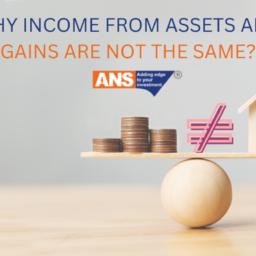
Want to invest your money but scared about getting returns?
As we all know 2023 is the year of inflation, the only way to grow your money and beat inflation is through investing it in financial instruments and getting higher returns.
Investing can also come with challenges as to where to start, and where to invest when we have so many options available and many more.
This article will help you explore options for investing and getting higher returns, and a proper money plan.
Here’s a list of the top 7 one should consider:
1. GOVERNMENT BONDS
A government bond is a type of debt security issued by the central and state govt of India.
- Availability
Both state and central govt issue these bonds and announce the issuing before the dates are announced.
The bonds that are issued by the central govt are called G-Secs and the ones issued by the state govt are called state development loans.
A bank account is a must to issue govt bonds. You can also have a demat account to invest in govt. Bonds.
- How to Invest
The price of the bond is announced on the day of the bond announcement by the govt.
To invest in G-Secs you need to download the e-kuber app, there is also another way to buy these bonds which is through a commercial bank listed by the govt. And to do that you need to have a securities amount.
- Returns
All government bonds are fixed-rate bonds as a result of which the interest rate is fixed throughout the year till the bond matures. Turning on the coupon rate determined during the time of purchase, you also get a 6-month interest for the laid down bond holding period.
- Risk
Low to nil
2. SOVEREIGN GOLD BONDS (SGBs)
SGBs are a type of government securities which are issued by the reserve bank of India and these are denominated in the form of gold.
- Availability
These bonds are open for auction after the central govt has announced the dates.
There are a few requirements to buy these bonds:
- You should have your PAN card
These bonds can be bought from banks, post offices, and stock brokerage.
- How to Invest
You can buy a minimum of 1 gram of share and a maximum of 4 kgs as an individual and 20 kgs as a trust. Currently, you can receive a discount of INR 50 on each gram you purchase.
- Returns
You get 2.5% of interest twice a year.
- When does the bond mature?
The bond matures at the end of 8 years and early redemption can be done at the end of 5 years.
- Risk
Low to medium
3. EQUITY MUTUAL FUNDS
An equity mutual fund is a type of financial instrument in which all the investors pool their money to invest in stocks to earn returns
- Availability
Can be invested Voluntarily through SEBI-authorized individuals, brokerage companies
- How to Invest
The minimum amount to invest is INR 1000 and there is no maximum amount to invest.
You should have a demat account and a trading account to invest in. There are eight types of equity mutual funds to invest in.
- Returns
Equity mutual funds are known to bear the most fruitful returns among other mutual fund investments. For example, some equity mutual funds give a return of up to 35% at the end of 5 years, and as high as 117% in 2021.
- When does the bond mature?
Investors are free to retrieve their investments in open-ended equity mutual fund schemes.
- Risk
Medium to high
4. PUBLIC PROVIDENT FUND (PPFs)
It is a type of government fixed-income scheme, which is a risk-free investment as it has guaranteed investments.
- Availability
PPFs can be facilitated in all post offices and Indian banks.
There is no age limit, a minor’s account is handled by his guardian until the age of 18.
- How to invest?
The minimum investment amount is INR 500 and the maximum investment amount is INR 1.5 lakh per annum.
A deposit can be made 1-12 times in one financial year.
- Returns
The interest rate currently is 7.10% per annum.
- Maturity
A PPF fund matures after 15 years, with partial withdrawals after 5 years.
- Risk
Low to nil
5. POST OFFICE MONTHLY INCOME SCHEME
This scheme is popular in domestic households, particularly among housewives, and individuals who are earning passive income.
- Availability
This scheme offers a single account or a joint account.
Everyone can invest in this scheme even a minor, more than 10 years of age.
- How to invest?
The minimum amount to open an account is INR 1000 and the maximum balance amount is INR 4.50 lakh and 9 lakhs in single and joint accounts respectively.
- Returns
This scheme offers an interest return of 6.60% per annum which is paid monthly.
- Maturity
You can close the account after 5 years, if anyone wants to close the account they can after one year of opening the account. However, if the account is closed between 1-3 years 2% from the principal account is deducted and 1% for 3-5 years.
- Risk
Nil to low
6. UNIT LINKED INSURANCE PLANS (ULIPs)
ULIP is a type of insurance plan that provides the dual well-being of investment to fulfill
One’s long-term plans and goals, and a life savior to financially protect your family during the case of an unfortunate event.
- Availability
ULIPs can be bought from any bank or insurance company operating all over India.
You need to provide your income proof before investing.
- How to invest?
The minimum investment amount depends on the financial status of the separate entity, generally, INR 1500 is required as the premium payment per month.
- Maturity
ULIPs have a maturity period of 5 years after which all the policyholders can withdraw their money without any penalty and continue depending upon the terms and conditions.
- Returns
There is a simple formula to calculate the rate of return:
ULIP NAV= (value of current assets + value of investments ) – (value of current liabilities and provisions) / total number of outstanding units on a specific date.
- Risk
Medium to high
7. REITs
REITs allow an investor to invest in a portfolio of income-generating real estate assets by buying units of REIT that are similar to units of mutual funds.
- Availability
REITs are just like equity shares they are also listed in share markets, therefore a demat account is compulsory to invest in REITs in India.
- How to invest?
The minimum investment amount of INR 10000-15000 is applicable for investment through IPOs.
- Returns
REITs are requested to deliver 90 percent of their portfolio’s net rental dividends or interests of their shareholders.
As a REIT investor, you can earn via dividends.
- Maturity
REITs do not have any maturity date.
- Risk
Medium to high
IN A NUTSHELL
Now you won’t have issues and confusion about where and how much to invest, if you are confused as to where to invest your money contact ANSPL SHARES for the best investment advice today.















